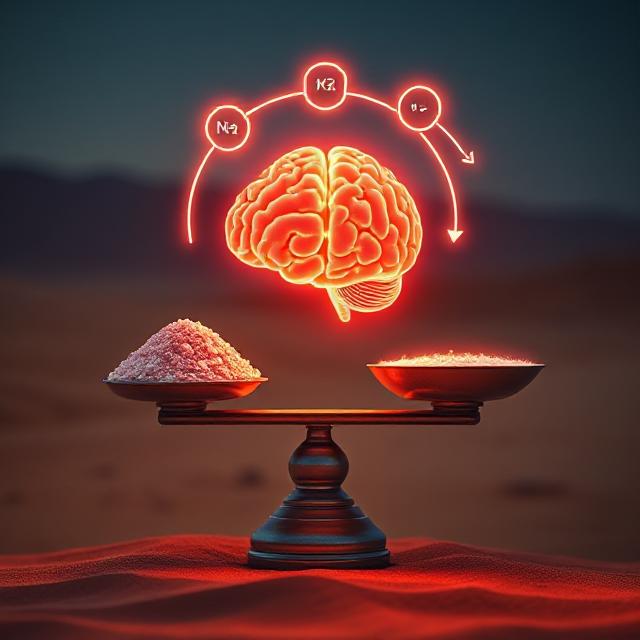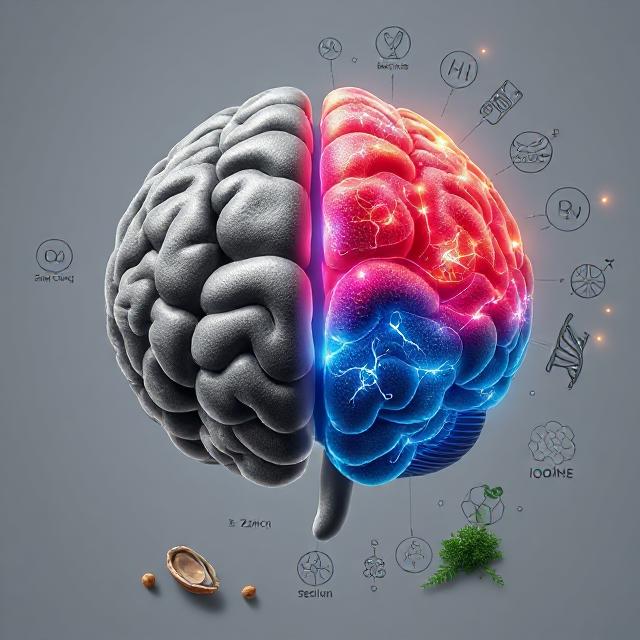Table of Contents
Mineral Balance for Energy: Fuel Your Body and Brain
When most people feel tired, they reach for caffeine or sugar. But true, lasting energy isn’t chemical—it’s electrical. Your body runs on charged particles. Your cells communicate through voltage. Your neurons fire with electricity. And at the core of all this? Mineral balance for energy.
Minerals like sodium, potassium, magnesium, and calcium aren’t just nutrients—they’re electrolytes that maintain the electrical gradients across cell membranes. When they’re imbalanced, you feel it: fatigue, muscle cramps, brain fog, dizziness, and even mood swings. Energy isn’t just about “macros”—it’s about micronutrient electricity.
What Are Electrolytes, Really?
Electrolytes are minerals that carry an electric charge when dissolved in water. These charges are what allow your body to:
- Conduct nerve impulses
- Contract muscles (including your heart)
- Regulate hydration and fluid balance
- Generate ATP (cellular energy)
Your body is like a battery. When electrolyte levels drop or get out of ratio, your “voltage” drops. You can eat enough calories and still feel exhausted. That’s the silent epidemic of mineral depletion.
The Big Three: Sodium, Potassium, Magnesium
Sodium – The misunderstood conductor
Sodium is often demonized, but it’s essential for nerve function, blood volume, and nutrient absorption. It helps maintain fluid balance and blood pressure—especially critical during fasting, ketogenic diets, or high sweat losses.
Signs of low sodium:
- Lightheadedness when standing
- Brain fog
- Muscle weakness
- Craving salt or processed foods
→ Optimal range: ~4–6g of sodium (about 2 tsp of salt) per day, depending on diet and lifestyle.
Potassium – The muscle whisperer
Potassium balances sodium, supports muscle contractions, and prevents cramping. It also helps shuttle glucose into cells for metabolic fuel.
Signs of low potassium:
- Muscle cramps
- Fatigue after exertion
- Irregular heartbeat
- Constipation
→ Food sources: Avocados, bananas, potatoes, coconut water.
Magnesium – The anti-fatigue mineral
Magnesium regulates over 300 enzymatic reactions—many related to ATP production and nerve function. It’s especially important for deep sleep and mitochondrial output.
Signs of low magnesium:
- Insomnia or restless sleep
- Anxiety
- Twitching or eyelid spasms
- Afternoon energy crashes
→ Forms that work: Magnesium glycinate, malate, or citrate (avoid oxide for absorption).
Why Most People Are Deficient
Modern diets and lifestyles are set up to deplete you:
- Refined foods have minimal mineral content.
- Chronic stress depletes magnesium and potassium.
- High water intake without salt can flush electrolytes.
- Low-carb and fasting protocols increase sodium loss through reduced insulin and aldosterone.
- Excess caffeine or alcohol increases urinary loss of electrolytes.
Even people eating “clean” may still be mineral-deficient—especially if they’re sweating, training, fasting, or drinking a lot of water.
⚙️ How to Rebuild Your Mineral Foundation
Step 1: Add Salt Back In
Start your day with a pinch of high-quality sea salt or pink salt in your water. This improves morning alertness and supports adrenal function.
Try: ½ tsp salt + lemon + warm water upon waking.
Step 2: Track Potassium-Rich Foods
Aim for 3,000–4,700 mg/day through food. Bananas are fine—but leafy greens, sweet potatoes, and coconut water give you more bang per bite.
Step 3: Supplement Magnesium Wisely
Start with 200–400 mg at night. Try different forms depending on your goal:
- Glycinate for calm
- Malate for energy
- Citrate for digestion
⚡ Energy Is a Mineral Equation
You’re not just tired—you’re discharged. When sodium is low, potassium can’t enter cells efficiently. When magnesium is low, your mitochondria stall. When fluid intake exceeds mineral intake, hydration becomes dilution.
Recharging means rebuilding mineral status—daily, strategically, and intentionally.
BrainWaveBoost Tip
If you’re doing intermittent fasting or low-carb, increase salt and take magnesium every night. These diets accelerate mineral loss, and replacing them is non-negotiable if you want sharpness, stamina, and deep sleep.
Weekly Mineral Reboot Protocol (Sample)
| Time | What to Do |
|---|---|
| Morning | 16 oz water + ½ tsp salt + lemon |
| Mid-morning | 1 cup coconut water or potassium-rich smoothie |
| Lunch | Avocado + dark greens + sea salt |
| Afternoon | Magnesium-rich snack (pumpkin seeds) |
| Evening | 300 mg magnesium glycinate + salt if needed |
Conclusion
Energy isn’t a mystery—it’s a matter of mineral balance. Reframe your fatigue as feedback from your body’s electrical system. By restoring key electrolytes—sodium, potassium, and magnesium—you don’t just survive the day. You power through it.
References
- Gropper & Smith. Advanced Nutrition and Human Metabolism, 7th Ed.
- NIH Office of Dietary Supplements: Magnesium
- Journal of the International Society of Sports Nutrition, 2019




